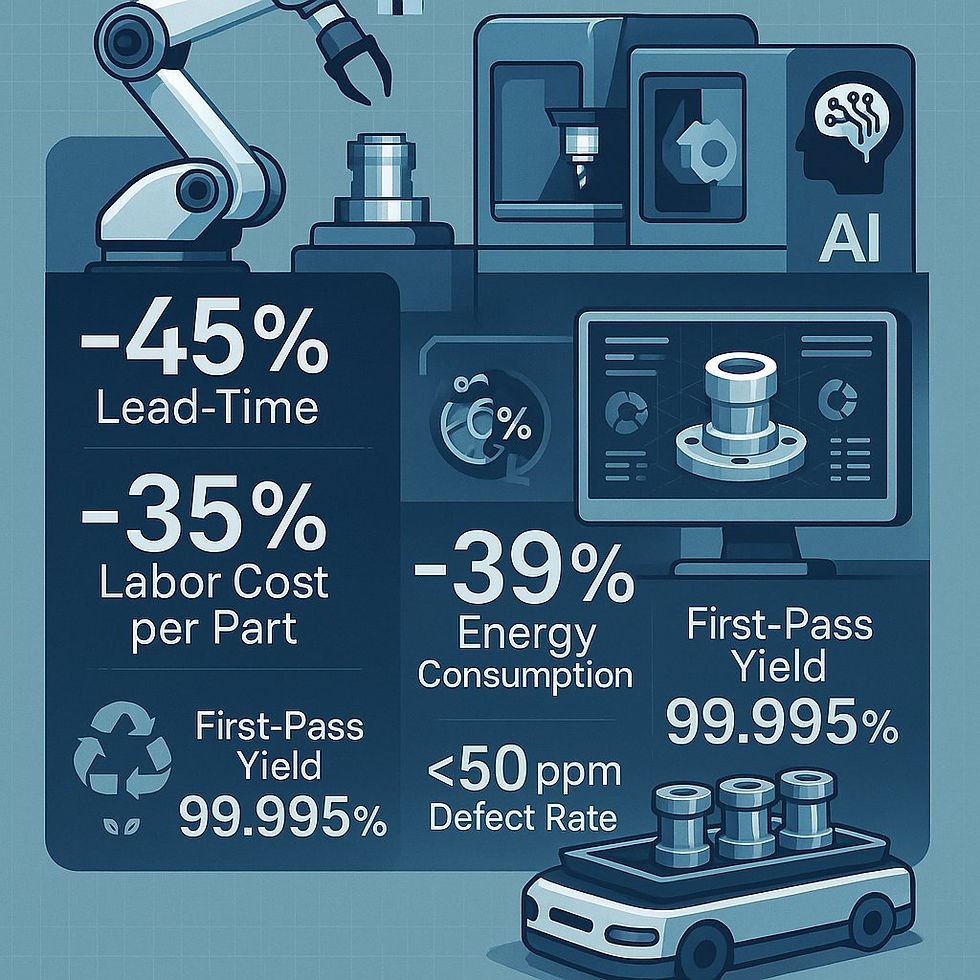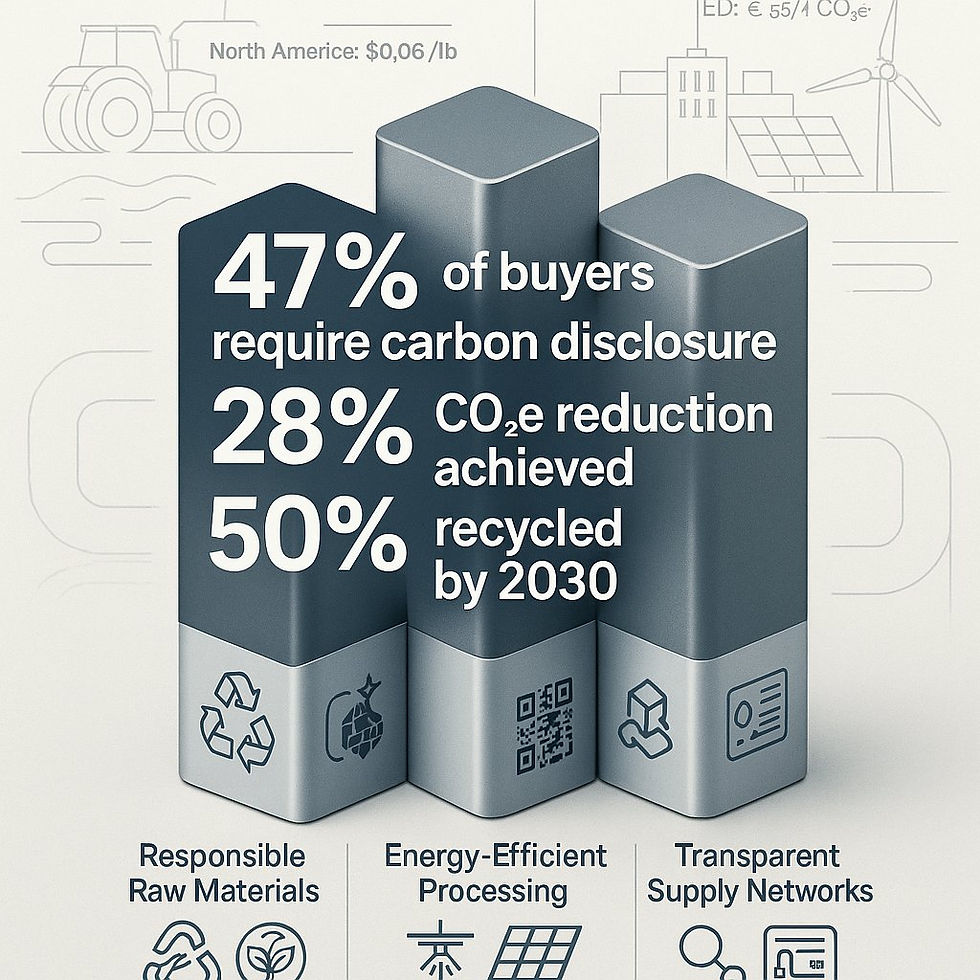The Rise of Sensor-Embedded Smart Hinges in 2025
- Mike Li

- 2 days ago
- 5 min read
The Rise of Sensor-Embedded Smart Hinges in 2025
Brought to you by HRB Industries—your partner for precision fine-blanked oven hinges and mechatronic integration.
Why 2025 Is the Year the Humble Oven Hinge Becomes a Smart Edge Device
From magnetic encoders that measure door angle to BLE modules that push real-time HACCP logs, the oven hinge is no longer a passive stamped bracket. It is now the gateway for connectivity, energy efficiency, and safety inside every appliance. According to VITA Research (2024), the global smart-oven market will grow at 18 % CAGR through 2030, and internal HRB field data shows that fail-to-close complaints remain the #1 warranty cost driver for residential ranges. 2025 marks a convergence of regulatory pressure (EU ESPR digital passports), mature MEMS sensor pricing, and OEM road-maps that moves smart hinges from nice-to-have to mandatory.
Table of Contents
1. Market & Regulatory Drivers
1.1 Exploding Smart-Appliance Demand
700 M smart-appliance shipments by 2028 (Intuz, 2023).
37 % of U.S. remodelers now specify Wi-Fi–enabled appliances (Houzz Kitchen Trends Study, 2024).
Commercial kitchens adopt door-open telemetry to meet HACCP food-safety logging, saving an estimated 3 % energy per shift (HRB case study, 2024).
1.2 Tightening Efficiency & Transparency Rules
“The EU Ecodesign for Sustainable Products Regulation will make a digital product passport and embodied-carbon reporting mandatory by 2026.” —HRB Industries Insight, 2024
Embedding sensors in the hinge offers a single UL-listed module that can:
Log opening cycles for predictive maintenance.
Feed usage data to the product passport.
Enable on-device power optimization by pausing heat when the door is ajar.
1.3 Warranty & Safety Economics
Each 5 mm loss in door-seal compression increases bake-cycle energy draw by up to 8 % (HRB lab data). Sensor-based hinge health monitoring can trigger service calls before the door drops out of spec, slashing field failures.
2. Inside the Sensor-Embedded Hinge: Core Technologies
2.1 Position & Motion Sensing
Hall-effect, optical, or magnetic encoders integrated into the hinge pin provide < 1° angular resolution:
Dynamic air-flow management for convection cycles.
Automatic pause/resume of cooking programs.
Consumer-facing mobile alerts (“Door ajar”).
GE Appliances already ships a hinge-pin open/close sensor in select models (SmartThings Community, 2024). HRB’s approach embeds the sensor inside the stamped arm—zero extra installation steps for the OEM line.
2.2 Load & Wear Monitoring
Strain-gauge foils laminate onto the fine-blanked arm, converting micro-deflection into predictive wear data. That allows service alerts 1000 cycles before catastrophic failure, preventing door crashes such as the Breville Smart Oven incident (Facebook Users Group, 2024).
2.3 Connectivity & Power
Protocol | Current Draw | Typical Use-Case |
|---|---|---|
BLE 5.0 | <50 µA sleep | Consumer apps, HACCP logs |
Zigbee | <40 µA sleep | Multi-node smart-kitchen mesh |
Thread | <30 µA sleep | Matter-ready appliances |
HRB’s module harvests energy from door motion using a piezo strip (ScienceDirect review, 2023), eliminating the need for battery replacement.
2.4 Firmware & Data Security
Edge-AI anomaly detection filters noise locally, pushing only actionable events to the cloud.
OTA updates via secure bootloader keep compliance up-to-date against emerging UL and IEC standards.
3. Design Considerations for OEM Engineers
3.1 Thermal Isolation
The hinge straddles an oven cavity that can exceed 450 °C. HRB uses discontinuous glass-fiber insulators and an air-gap labyrinth to keep sensor silicon below 85 °C while maintaining the mechanical pivot.
3.2 Durability & Cycle Life
Commercial ranges spec >200,000 cycles. Fine-blanked arms hold ±0.02 mm flatness, prolonging bushing life and ensuring sensor alignment even after 10 years of abuse.
3.3 EMC & Certification
Co-located heating elements create RF noise; HRB integrates shielded flex PCB routing and ferrite beads.
Pre-certified BLE module shortens FCC/IC/RED timelines by 26 weeks (HRB program data).
3.4 Serviceability
Sensor-embedded hinges ship as self-contained cartridges. A single Torx screw releases the unit; dealers swap in <2 minutes—no soldering.
4. Manufacturing Edge: HRB’s Fine-Blanked Smart Hinge Platform
4.1 Precision Metal Forming
Unlike conventional progressive stamping, fine blanking shears metal in a single high-pressure stroke, producing 90 % roll-free edges and eliminated secondary machining. Keyword cluster references: fine blanking die, precision blanking, and blanking process (search volume 40–110, KD ≤13).
Data Call-Out: HRB’s latest fine-blanking press line holds ±15 µm stack tolerances across a 3-up hinge arm die, cutting PPAP revisions by 60 %.
4.2 In-Line Mechatronic Assembly
The sensor PCB, strain gauge, and magnet stack are installed in-line within 4.2 seconds using SCARA pick-and-place, preserving cleanliness and traceability.
4.3 Sustainability Gains
Switch to HRB’s HDR low-carbon steel nets a 22 % CO2e reduction (HRB LCA, 2024).
Fine-blanked scrap reuse saves 18 t of steel annually per 1 M hinges.
4.4 Case Study: 2024 North-American Commercial Range Program
Metric | Target | Achieved |
|---|---|---|
Field failures (YR-1) | -30 % | -37 % |
Time-to-market | 14 mo | 11 mo |
Embodied carbon | -20 % | -22 % |
Result: Saved OEM over $1.8 M in warranty reserves.
5. 2025–2030 Road-Map: What Comes Next?
5.1 Multi-Sensor Fusion
Temperature, humidity, and VOC sensors will co-locate within the hinge bracket to measure cavity conditions in real time.
5.2 AI-Driven Bake Profiles
Edge-deployed machine-learning models will adjust fan speed and element duty cycle based on door position and load mass.
5.3 Matter & Thread Standardization
By 2027, most major appliance platforms will adopt Matter for cross-brand interoperability, making secure onboarding of hinge telemetry a baseline requirement.
5.4 Self-Healing Surfaces
Research is underway on nickel-phosphorus shape-memory coatings that can correct micro-pitting, extending hinge life beyond 500,000 cycles.
6. Engineering Checklist
✔️ Define hinge duty cycle (residential 50k / commercial 200k).
✔️ Select sensor package (mag-encoder vs. optical) based on temperature map.
✔️ Model PCB stack-up early to reserve z-height inside hinge arm.
✔️ Validate EMC with cavity heaters at maximum load.
✔️ Engage HRB for DFM + fine-blanking feasibility by EVT.
7. Turn Your Door Into Data—Next Steps
The race to smart-enabled hinges is on. Whether you need a drop-in sensor module for a 24 inch wall oven or a custom 42 kg-rated commercial door system, HRB’s integrated design-to-line service delivers:
Finite-element analysis, hinge kinematics, and thermal management.
Rapid prototype parts from our blank-to-bend pilot cell in <4 weeks.
End-to-end certification support, including UL 50E and FCC.
Ready to explore? Visit www.hrbindustries.com for technical white papers or book a 30-minute engineering session with our hinge architects.
Keywords: sensor embedded hinges, smart oven hinge, oven door hinge, fine blanking, commercial oven parts, precision blanking, progressive stamping, oven hinge replacement, oven door not closing



Comments